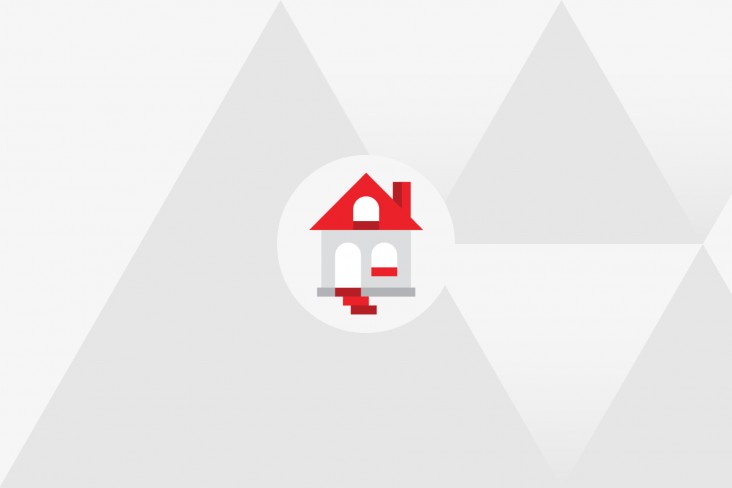Laws around residential tenancies have undergone massive change in the past few years – and it’s not letting up any time soon.
In breaking news, the Government has just released the highly-anticipated standards, which formed part of the Healthy Homes Guarantee Act 2017, and are designed to improve the overall quality of rental homes. The finer detail of the regulations is still being worked on, and, once that’s completed in the next few months, landlords and industry professionals will be provided tools and guidance.
For starters, though, this is what the Healthy Homes Standards will look like:
- Heating – Rental homes must have fixed heating devices in living rooms, which can warm rooms to at least 18°C.
- Insulation – Rental homes must have ceiling and underfloor insulation which either meets the 2008 Building Code, or (for existing ceiling insulation) is at least 120mm thick.
- Ventilation – Rental homes must have the right size extractor fans in kitchens and bathrooms, and opening windows in the living room, dining room, kitchen and bedrooms.
- Moisture and drainage – Rental homes must have efficient drainage and guttering, downpipes and drains. If a rental home has an enclosed subfloor, it must have a ground moisture barrier, if it’s possible to install one.
- Draught-stopping – Rental homes must have no unnecessary gaps or holes in walls, ceilings, windows, floors, and doors that cause noticeable draughts. All unused chimneys and fireplaces must be blocked.
So, if you’re a landlord, how long do you have to ensure your rental(s) is up to legal scratch?
From July 1, 2021, private landlords’ rental properties must comply with the new Healthy Homes Standards within 90 days of any new tenancy, while Housing New Zealand and Registered Community Housing Providers have until 2023.
All rental properties in New Zealand must meet the standards by July 1, 2024.
For the latest information on the changes, check out the Ministry of Housing and Urban Development.
Insulation countdown heating up
Another major change comes into effect as of July 1 this year: minimum insulation standards.
Given the costs involved, and the numbers of rental homes needing upgraded insulation to be compliant, there has been a long lead-in time (the new requirements were passed into law in 2016 under the Residential Tenancies Act). However, latest Government stats indicate there are thousands upon thousands of rental properties that still need ceiling and underfloor insulation installed, where the space is accessible to do so.
If you’re a landlord and have properties that don’t yet meet the minimum standard, our strong recommendation is to arrange your insulation installation right now – especially if you plan to use a professional installer. You don’t want to leave it any longer, and risk being delayed by the late run of landlords seeking their services. From what we’ve seen, the Ministry of Business, Innovation and Employment’s Tenancy, Compliance and Investigation Team will be straight to work come July 1, ensuring landlords’ properties are not running foul of the new laws. Those who do face coughing up exemplary damages to their tenants of up to $4000 per property.
But, what impact do the latest Healthy Homes Standards, which also cover insulation, have?
If you’re a landlord, and you’ve installed new installation since 2016, your property should meet the 2008 Building Code, as required – so, you’ll already be compliant once the new Healthy Homes Standards come in.
However, there will be some landlords (whose properties had ceiling and underfloor insulation that was at least 70mm thick and in good condition) who didn’t need to take action under the 2016 law changes, but will under these newly-released standards. These will require all rentals to have insulation in line with the 2008 Building Code, or that is at least 120mm thick.
But wait … there’s more
If you missed it in the hectic lead-up to Christmas, letting fees were abolished in December. Word on the street – and on online forums – suggest, in some cases, these are being passed onto landlords as a one-off fee, or as an ongoing “administration” fee, and that these are being reflected in higher rents for tenants.
There is a raft of further changes in the wind, the details of which are currently being teased out in Parliament.
Firstly, the Residential Tenancies Amendment Bill (No 2) had its second reading in Parliament in November, but is generally supported by all parties. It, essentially, centres on three changes around rental properties that are unlawful for residential use, contamination of residential properties and clarifying tenant liability for damage.
The Bill allows a tenant to terminate their tenancy by giving not less than two days’ notice, and also allows the Tenancy Tribunal to take action if it’s determined that a rental premise is unlawful for residential purposes. The tribunal would look at the particular circumstances of each case, but could make orders requiring the landlord to pay the tenant a full or partial rent refund, require work to be done to comply with legislation within a specified timeframe, award damages, or terminate the tenancy, among other things.
If the proposals are adopted, landlords will be allowed to enter properties on short notice to test for contaminants, such as meth, and take samples for analysis. (Short notice is 48 hours for non-boarding houses, but landlords must tell tenants what they are testing for and share the results within seven days of receiving them.)
Where a property is found to be contaminated, consequences could include the termination of a tenancy where the property is uninhabitable. The Bill also makes provision for regulations, including the likes of maximum acceptable level of contaminants, the way testing is to be carried out and the decontamination process.
The third aspect of the Bill is aimed at clarifying tenant liability for careless damage, and to require landlords to provide their insurance information to tenants. The Bill outlines that, if tenants damage a rental property due to careless behaviour, they are liable for the cost of repairs up to four weeks’ rent or the insurance excess – whichever is lower. A tenant will still be fully liable for the whole cost of damage if the:
- damage was intentionally caused by the tenant (or tenant's guest)
- damage was the result of an act or omission by the tenant (or tenant's guest) which constitutes an imprisonable offence, or
- insurance money is irrecoverable because of the tenant's (or tenant's guest's) act or omission
Taxing times may be ahead
A tax Bill, which has ramifications for landlords, is at the select committee stage. It proposes loss ring-fencing rules, which, basically, mean that landlords with residential properties will no longer be able to offset tax losses from those properties against their other income (for example, salary or wages, or business income), to reduce their tax liability. Under the Bill’s proposals, the losses could be used in future years, when the properties are making profits, or if the person is taxed on the sale of land only. IRD has proposed that these new rules apply from the start of the 2019-20 income year.
Two further legislative reviews could bring further, significant change.
The Residential Tenancy Act is set for a major overhaul, with Parliament currently considering:
- providing security of tenure for tenants
- removing the 90-day no cause notice
- how a landlord can sell their rental property
- allowing tenants to modify their rental
- potentially making it compulsory to allow pets
Consultation closed in October, and we now await what changes the Government intends to pursue. Watch this space.
There is clearly much to keep up with currently, but landlords simply cannot afford to fall behind or fail to factor in the financial impact of the reforms. Change almost inevitably comes at a cost – but so does non-compliance, and increasingly so with residential tenancies.

